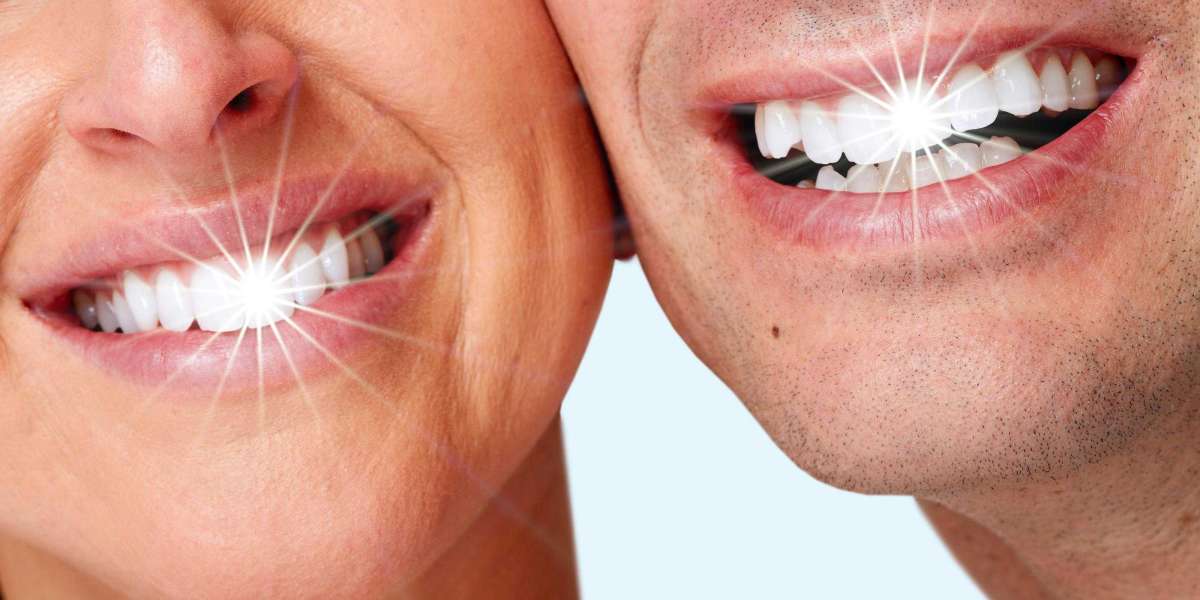If you’re looking to achieve a brighter smile, teeth whitening can be a great option. However, with so many products and treatments available, it’s important to understand how to safely and effectively Teeth Whitening. This guide will walk you through the best practices, tips, and techniques to help you achieve a whiter, healthier smile without compromising your oral health.
Understanding the Basics of Teeth Whitening:
Before you embark on your whitening journey, it’s essential to understand the science behind it and the different types of products available.
How whitening works—Whitening treatments work by breaking down stains on the surface of your teeth or within the enamel. Common ingredients like hydrogen peroxide and carbamide peroxide are used to lift and lighten discoloration.
Different methods—There are several teeth whitening options available, including in-office treatments, over-the-counter products, and DIY methods. Each method offers varying degrees of effectiveness and safety.
Professional vs. at-home treatments—Professional treatments typically provide faster and more noticeable results, while at-home products may take longer but can still be effective when used consistently.
Understanding these basics will help you make an informed decision on the best whitening method for your needs.
Choosing the Right Teeth Whitening Product:
When it comes to selecting a teeth whitening product, not all options are created equal. Here’s what to look for:
Whitening toothpaste—These typically contain mild abrasives that can remove surface stains over time. They are best for maintaining your smile after a whitening treatment.
Whitening strips—These are easy to use and offer moderate results. They contain a thin layer of whitening gel that you apply to your teeth for a set period of time.
Whitening trays—These are custom-fitted or one-size-fits-all trays that hold a whitening gel against your teeth. They are more effective than strips, especially when prescribed by a dentist.
Laser whitening—This professional treatment uses a strong bleaching agent activated by a special light to produce rapid results.
Choosing the right product depends on your budget, time, and the level of whitening you desire.
The Importance of Safety in Teeth Whitening:
While whitening your teeth can be effective, it’s important to prioritize safety to avoid damaging your teeth and gums.
Avoiding overuse—Excessive use of whitening products can lead to tooth sensitivity or damage to your enamel. Follow the instructions carefully and avoid overusing whitening treatments.
Professional supervision—If you’re concerned about potential damage or want quicker results, professional treatments under a dentist’s supervision can ensure your safety while achieving optimal results.
Sensitivity management—Some whitening treatments may cause temporary sensitivity, especially if you have pre-existing issues like gum recession or thin enamel. Use products designed for sensitive teeth if needed.
Ensuring the safety of your teeth and gums is critical to maintaining long-term oral health while whitening.
Natural vs. Chemical Whitening Methods:
If you’re wary of chemicals, there are natural alternatives to consider for whitening your teeth. However, they come with varying levels of effectiveness.
Baking soda and hydrogen peroxide—A DIY mixture of baking soda and hydrogen peroxide can be used as a mild abrasive to scrub away surface stains.
Activated charcoal—Some people use activated charcoal to remove stains, but its abrasiveness can damage enamel if used too often.
Coconut oil pulling—While not scientifically proven for significant whitening, oil pulling with coconut oil can help remove some surface stains and promote overall oral hygiene.
Natural methods tend to be gentler on teeth but may require more time to show noticeable results compared to chemical whitening methods.
Maintaining a White Smile:
Once you’ve achieved your desired level of Best Teeth Whitening, maintaining that bright smile is key.
Avoid staining foods and drinks—Foods and drinks like coffee, tea, wine, and berries can stain your teeth. Avoid or limit their consumption, especially immediately after whitening treatments.
Good oral hygiene—Brushing your teeth twice a day, flossing, and using mouthwash regularly will help prevent new stains from forming and maintain your bright smile.
Touch-ups—Over time, your teeth may begin to lose some of their whiteness. Using touch-up treatments, such as whitening toothpaste or gels, can help restore brightness.
With proper maintenance, you can keep your teeth looking white and fresh for months to come.
Potential Risks and How to Avoid Them:
While teeth whitening is generally safe, it’s important to be aware of potential risks and take steps to avoid them.
Tooth sensitivity—Some whitening products may lead to temporary sensitivity. Using a desensitizing toothpaste before and after treatment can help alleviate discomfort.
Gum irritation—Improper use of whitening products can cause gum irritation. Be sure to apply whitening agents only to your teeth and avoid contact with your gums.
Ineffective treatments—Not all whitening products are effective for every person. If you have intrinsic stains or very dark teeth, professional whitening may be necessary for better results.
By understanding the potential risks and following proper guidelines, you can ensure a safe and effective whitening experience.
In conclusion, teeth whitening is a popular and effective way to brighten your smile, but it’s important to approach it with care. By understanding your options, prioritizing safety, and maintaining your results, you can achieve a beautiful, white smile that lasts. Whether you choose a professional treatment or a DIY approach, the key to success is consistency and proper aftercare.











